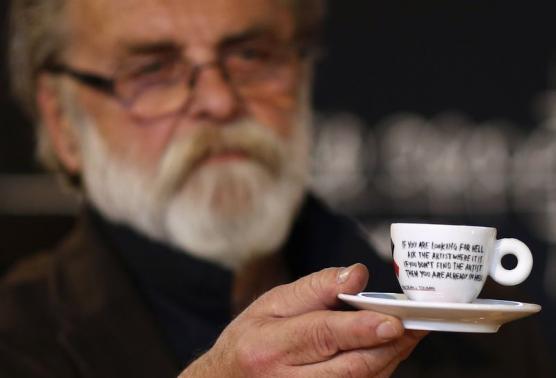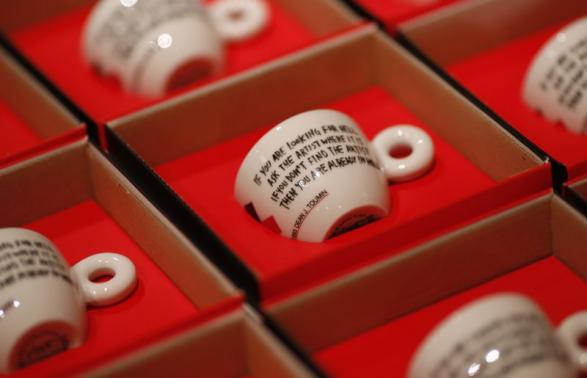
CREDIT: REUTERS/DADO RUVIC
( Reuters) – It is hard finding a bright side to the museum scene in the Bosnian capital Sarajevo, where the Olympic Museum burned down during a 1992-95 siege by Serbian forces and the main national museum closed in 2012 for lack of funds.
But thanks to a grant from the Italian government and a plan by Italian coffeemaker illycaffe to sell designer coffee cups to support the project, there is hope for one man’s vision of creating a modern art museum for a city still suffering the aftershocks of the ethnic conflict of the 1990s.
“That night when the museum was burned down, a spontaneous idea emerged as a reaction to all those religious and ethnic divisions,” said Enver Hadziomerspahic, who directed the 1984 Sarajevo Winter Olympics opening and closing ceremonies.
The idea was “to invite world artists to form a collection of their own future museum of contemporary art which would become a symbol of a new Europe and an expression of international collective will”, he told Reuters in an interview.
Hadziomerspahic lobbied European museums and galleries to take part in the project even while the war, pitting Muslim Bosniaks against Orthodox Christian Serbs and marked by the longest siege in modern history, still raged in Bosnia.
Museums in Milan, Prato, Venice – all in Italy – and Ljubljana and Vienna became partners of his ARS AEVI collection. That helped persuade world-renowned artists such as Michelangelo Pistoletto, Marina Abramovic, Joseph Beuys and Janis Kounelis to donate works for a collection estimated to be worth around 20 million euros ($27 million).
Twenty-two years on, the collection of around 150 works is still homeless because of political bickering in the Balkan country, where rival ethnic elites cannot agree on any nation-wide cultural project.
But a temporary ARS AEVI exhibition depot was opened in Sarajevo in February after the Italian government contributed $1 million through UNESCO.

CREDIT: REUTERS/DADO RUVIC
LIMITED EDITION CUPS
Last Thursday, Trieste-based illycaffe launched a limited edition of its art cups designed for ARS AEVI by Sarajevo-born artist Dean Jokanovic Toumin. The unique lines of cups, designed by top contemporary artists, have been sold around the world.
“The idea is magical, we think we can be the catalyst to bring other people,” Giacomo Biviano, illycaffe’s deputy general manager, told Reuters. “Through this cup we can let other countries know there is this museum in Sarajevo.”
A quotation written on the cups from an 18th century writer, Avigdor Pawsner, could very well apply to artists and cultural institutions in modern-day Sarajevo: “If you are looking for hell, ask the artist where it is. If you don’t find the artist, then you are already in hell.”
The arrival of the first private partner has raised hopes that the collection can find a permanent home in a museum building already designed – but not yet built – by prize-winning Italian architect Renzo Piano.
“We hope and we are working to get more private partners,” said Ruggero Corrias, the Italian ambassador to Bosnia who lured the Italian roaster into the ARS AEVI museum project.
“Our final goal remains to have a sustainable ARS AEVI so we can land into the Renzo Piano museum,” Corrias told Reuters.
With museums in Sarajevo barely surviving, Hadziomerspahic knows he is lucky. The National Museum closed in 2012 because of lack of support from any government institutions. It had survived two world wars and the Bosnian war in the 1990s.
“I am happy and sad at the same time, happy that we are moving forward but sad that Italy, and not our own politicians, should be behind the drive for promoting the project,” Hadziomerspahic said.
($1 = 0.7345 Euros)
(Reporting by Daria Sito-Sucic; Editing by Zoran Radosavljevic, Michael Roddy and Gareth Jones)
source: http://www.reuters.com / Reuters.com / Home / by Dario Sito-Sucic / Sarajevo, Monday – June 09th, 2014

